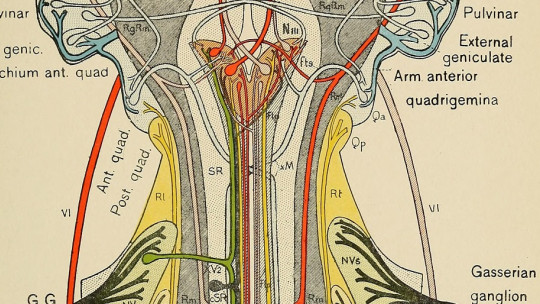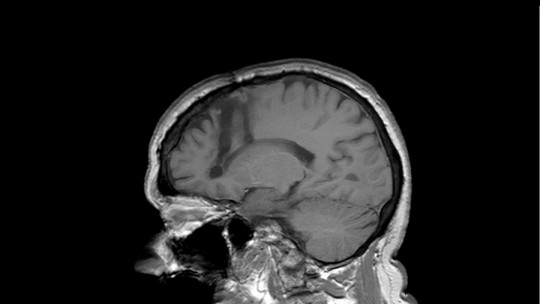
In the world there are nearly 400 million people who suffer from mental disorders. These disorders must be treated with psychotherapy and psychotropic drugs, but it is also necessary to know what social causes cause someone to manifest psychopathology.
This intention to know such causes has a clearly preventive objective, since knowing the social factors that affect mental health would prevent them from occurring.
Social psychiatry has attempted to fulfill this objective by defending the idea that by knowing the social, one can work on the psychopathological Let’s delve deeper into this branch of psychiatry.
What do we understand by social psychiatry?
Social psychiatry was a preventive current within the branches of health that had a lot of influence in the United States after World War II She was focused on identifying social factors that were believed to influence the emergence of psychopathology.
Among the factors he studied were poverty, inequality and social exclusion, understood as not only socioeconomic phenomena, but also as promoters of psychopathology.
Social psychiatry was an interdisciplinary current, since it worked side by side with social scientists, especially sociologists and anthropologists. With work from different disciplines it was possible to study and determine the relationships between society, especially living in its most disadvantaged classes, and the occurrence of mental disorders.
The origins of social psychiatry can be found in the mental hygiene movements of the early 20th century This movement emphasized prevention and the role that the social environment played on the individual’s health, especially regarding mental health. Furthermore, it was from this approach that mental health professionals, such as social workers with psychiatric knowledge, were introduced.
The context for the formation of this branch lies in the fact that in the middle of the 20th century, psychiatry had a very good reputation and, during the 1920s and 1930s, there had been a boom in the social sciences.
Combining psychiatry with sociology resulted in a half-clinical, half-social branch that was strongly supported by scientific findings It was also a wake-up call for the psychiatric community, inviting it to pay attention to the social sciences that could offer so much in the prevention of psychopathology.
Research in Chicago
Interestingly, the first research in social psychiatry was conducted by sociologists. These were Robert Faris and H. Warren Dunham of the Chicago School, a sociological movement focused on understanding to what extent social injustices damaged the health of individuals In their book “Mental Disorders in Urban Areas” from 1939, the two researchers established a relationship between poverty and mental disorders.
Their work consisted of analyzing 30,000 hospital admissions in the city of Chicago, and they used maps to demonstrate, graphically, how different the disorders diagnosed by professionals were in different parts of the city It caught their attention that in Chicago’s Hobohemia, corresponding to the Tower Town neighborhood, many cases of paranoid schizophrenia were reported.
The Hobohemia of this city, that is, the artistic and alternative neighborhood, had a large population of homeless people, pickpockets and people asking for charity. Since the area was extremely poor, its inhabitants lived very unstable lives. Their existence was practically anonymous, and many were isolated from their families or society in general, despite living in the most populated area of the city. They felt frustration, confusion and had a chaotic lifestyle.
Curiously, if in Chicago Hobohemia the most common was paranoid schizophrenia, catatonic schizophrenia was the star diagnosis in poor areas of the city populated by foreign immigrants and African Americans. In rich areas, in contrast to the two previous diagnoses, it was most common to detect people suffering from manic depression.
Although with their differences, other similar studies were carried out in other parts of the United States, finding similar patterns between rich areas, poor areas and the indigent population.
Likewise, there were those who criticized these findings, arguing that those people who suffer from disorders such as schizophrenia, if they have grown up in a rich environment, unable to function properly in it, end up going to richer neighborhoods. That is They considered that it was not social factors that contributed to mental disorder, but rather that it was the disorder that caused one to end up being poor
Faris and Dunham were critical of this criticism, pardon the redundancy. They argued that parents of patients in poor areas rarely came from wealthier neighborhoods. They also stated that the younger patients would not have had enough time or permissiveness from their parents to be able to leave their parents’ home and end up in a worse neighborhood.
These two authors showed how poverty, combined with psychological problems such as stress, isolation and living a disorganized life were factors that predisposed to poor mental health
Research in New Haven
Another study on how social factors influence mental health was conducted in the city of New Haven, Connecticut. The city was founded in 1638 by English Puritans and was smaller than Chicago. Its urban structure was perfect for seeing to what extent class influenced the mental health of its citizens, a study that was carried out by August Hollingshead and Fritz Redlich, sociologist and psychiatrist, respectively.
In their research they divided the city of New Haven into five areas according to their class Class 1 was the area inhabited by the descendants of the oldest inhabitants of New Haven, the “full-blooded New Haveners.” These families had resided in the city since its founding in the 17th century.
Class 5 was the most disadvantaged, made up of people with little training and who often performed seasonal jobs. While some were immigrants from Europe and Quebec, others were the so-called “swamp Yankees,” a population that had existed on the fringes of New Haven society for centuries.
Hollingshead and Redlich analyzed mental health by class in the city, revealing significant differences People in class 5 were three times more likely to be treated for a mental disorder than people in classes 1 and 2 combined. In fact, this attracted a lot of attention considering that in class 1 there were serious problems in obtaining access to psychiatric treatment.
Furthermore, the type of treatment between the disadvantaged classes and the wealthier classes was very different. While the lower classes received very invasive treatments, such as somatic therapies that included psychotropic drugs, electroconvulsive therapy and lobotomy, those in the higher classes usually received psychoanalysis. It is not surprising, given that psychoanalysis, being a more expensive therapy, the higher classes could see it as a status symbol to go to the psychoanalyst.
The United States after World War II
After the Second World War, interest in psychology and psychiatry grew due, above all, to the enormous number of traumatized soldiers apparently in the contest. For this reason, the United States, knowing that treating thousands of ex-soldiers with psychopathology was expensive, was interested in knowing how to avoid psychopathology and save a few million dollars. Designing prevention programs and methods, rather than finding the perfect treatment, was what was in focus.
It is for this reason that social psychiatry gained so much strength after the Second World War, and In 1949, the American National Institute of Mental Health (NIMH) was created The first objective of such a recent institution was to create prevention programs, and they knew how to take into account the studies of social psychiatrists.
But what definitely helped the rise of social psychiatry was none other than the help of American President John F. Kennedy. Inspired by a personal tragedy and the fact that in the United States there were 600,000 asylums in which patients were not exactly well treated due to oversaturation and lack of resources, Kennedy invested in the creation of prevention programs, highlighting this idea in a speech to the United States Congress in February 1963.
Thus, nearly 800 mental health centers were created that They had psychiatrists, social workers, psychologists and other health professionals among their ranks to work with the mental health of the local community This was revolutionary, ending the era of asylums in North America and reducing the stigma of mental health, promoting a more preventive vision than treatment and contributing to a better vision of going to therapy.
The fall of social psychiatry
Although the creation of those 800 mental health centers with preventive treatments was beneficial, they had the drawback that they really there was no work on the social factors behind mental disorders Furthermore, preventive treatments were rather scarce and in practice patients who already had chronic mental disorders were treated.
Although social psychiatry had helped to understand where many mental disorders came from, its inaction with social factors made knowing the theory useless as it was not applied in a practical way.
Besides, the therapeutic objective of the moment changed, given that the United States was once again experiencing the ghosts of war, this time with the worsening of the Vietnam War (1955-1975), in addition to the fact that the political situation in the country was tense, with changes of president from Kennedy to Lyndon B. Johnson and Richard Nixon.Therapeutic efforts once again focused on the health of soldiers, this time suffering from post-traumatic stress disorder. North American citizens from the poorest areas were greatly left aside.
It should be said that putting into practice an improvement of the most disadvantaged population from a social psychiatry perspective was difficult, given that one of the main assumptions of this discipline was that social improvement would come hand in hand with a better distribution of goods. Many social psychiatrists were in favor of a better redistribution of money, something that in a context such as the 1970s, in the middle of the Cold War against the Soviet Union, was seen as a communist manifesto, contrary to the American spirit.
But What undoubtedly ended social psychiatry was a strengthening of the organicist vision of mental disorders With the publication of the third edition of the DSM, which left aside the psychoanalytic vision to focus on a more scientific one, more attention was paid to the biological causes that were supposedly behind psychopathology.
The boom in psychotropic drugs in the 1980s, especially antidepressants and anxiolytics, gave strength to biological theories of disorders, so the social causes that could explain them were abandoned.








